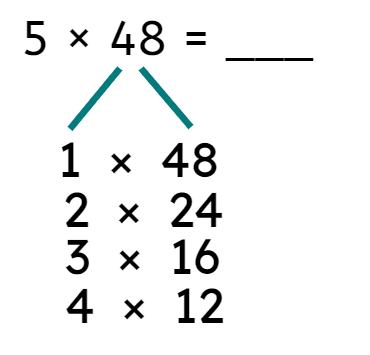Myths about teaching can hold you back
- Year 5
Explain the reasons for changing two-factor multiplication calculations to three-factor calculations
I can explain the reasons for changing two-factor multiplication calculations to three-factor calculations.
- Year 5
Explain the reasons for changing two-factor multiplication calculations to three-factor calculations
I can explain the reasons for changing two-factor multiplication calculations to three-factor calculations.
These resources will be removed by end of Summer Term 2025.
Switch to our new teaching resources now - designed by teachers and leading subject experts, and tested in classrooms.
These resources were created for remote use during the pandemic and are not designed for classroom teaching.
Lesson details
Key learning points
- Times table facts can simplify multiplication calculations using the factors of a number to make the calculation easier.
Keywords
Array - An array is when items are arranged in rows and/or columns.
Factor - Factors are whole numbers which exactly divide another whole number.
Associative - The associative law states that it doesn't matter how you group or pair values (i.e. which we calculate first), the result is still the same. It applies to addition and multiplication.
Efficient - Working efficiently means finding a way to solve a problem quickly whilst also maintaining accuracy.
Common misconception
Pupils think that the factor that must become the product of two factors is always the largest factor.
Ensure pupils are provided with a range of opportunities to break down factors, identifying where it does make a calculation easier, and also where it doesn't make the calculation easier.
To help you plan your year 5 maths lesson on: Explain the reasons for changing two-factor multiplication calculations to three-factor calculations, download all teaching resources for free and adapt to suit your pupils' needs...
To help you plan your year 5 maths lesson on: Explain the reasons for changing two-factor multiplication calculations to three-factor calculations, download all teaching resources for free and adapt to suit your pupils' needs.
The starter quiz will activate and check your pupils' prior knowledge, with versions available both with and without answers in PDF format.
We use learning cycles to break down learning into key concepts or ideas linked to the learning outcome. Each learning cycle features explanations with checks for understanding and practice tasks with feedback. All of this is found in our slide decks, ready for you to download and edit. The practice tasks are also available as printable worksheets and some lessons have additional materials with extra material you might need for teaching the lesson.
The assessment exit quiz will test your pupils' understanding of the key learning points.
Our video is a tool for planning, showing how other teachers might teach the lesson, offering helpful tips, modelled explanations and inspiration for your own delivery in the classroom. Plus, you can set it as homework or revision for pupils and keep their learning on track by sharing an online pupil version of this lesson.
Explore more key stage 2 maths lessons from the Multiply 3 or more numbers (commutative and associative laws) unit, dive into the full primary maths curriculum, or learn more about lesson planning.

Equipment
Licence
Prior knowledge starter quiz
6 Questions
Q1.What is the product of 6 and 25?
Q2.What is the missing factor 7 × = 84
Q3.Which pair of factors would you multiply together first to create the most efficient calculation? 17 × 40 × 5 =
Q4.Which equation is easiest to calculate?
Q5.There are two rabbits and each rabbit eats 50 g of food a day. How much will the rabbits have eaten in total after 14 days? g
Q6.There are 4 children in the family. They all drink a 250 ml carton of milk each at breakfast. How much milk is drunk in total each week? ml
Assessment exit quiz
6 Questions
Q1.Which statement is correct about this array?
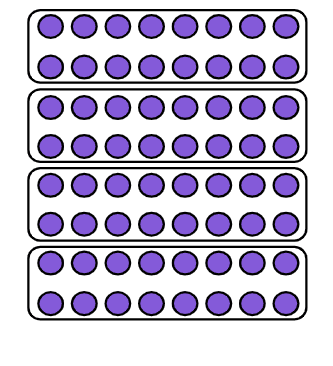
Q2.Tick all the statements or expressions that are true about the representation.
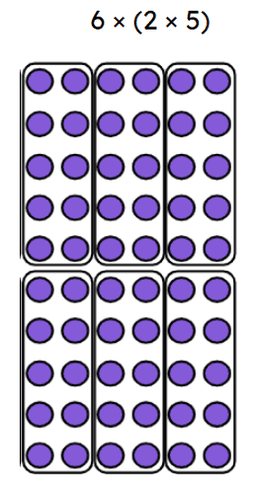
Q3.Tick the array that has been divided correctly into 3 factors.
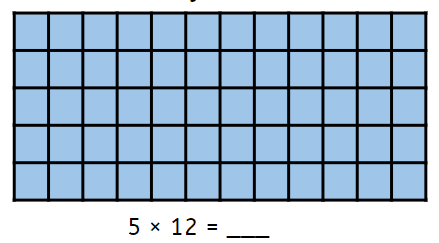
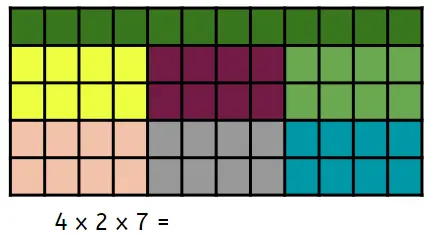
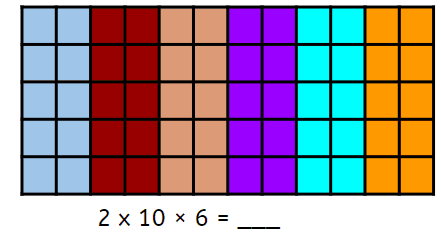
Q4.Which pair of factors would you choose for this calculation to calculate most efficiently?
